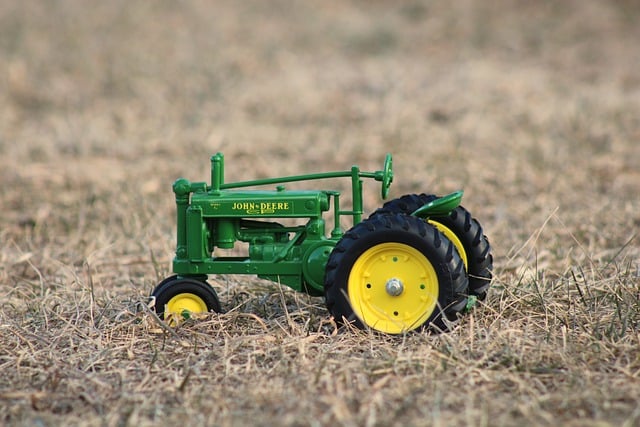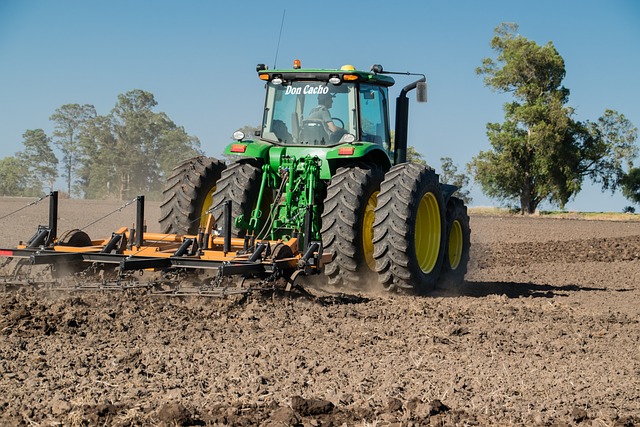If you're experiencing issues with your lawn tractor's battery connections, such as loose or disconnected wires, it's crucial to rectify this promptly. Start by safely removing the battery and cleaning any corrosion from the terminals using a wire brush. Ensure that the battery is fully charged and then securely reattach the red (positive) and black (negative) wires, taking care not to over-tighten or mix up the connections. For additional protection against future corrosion, apply dielectric grease to the terminals and wire ends. Once reinstalled, test the battery with a reliable battery tester to ensure it holds the appropriate voltage range for your lawn tractor's battery type. If necessary, recharge the battery following the manufacturer's guidelines, and after a full charge, return it to the tractor and conduct a test drive to confirm all electrical systems are functioning correctly. Regular maintenance and timely addressing of issues will help extend the life of your lawn tractor's battery and maintain its performance.
Repairing a non-responsive lawn tractor can be as simple as addressing faulty battery connections. This guide walks you through the process of diagnosing and fixing common issues with your lawn tractor’s battery system, ensuring your machine operates at peak performance. From understanding your battery’s components to safely inspecting and cleaning corroded terminals, and reattaching loose wires, follow our detailed steps to ensure a reliable power source for your trusted lawn companion.
- Understanding Your Lawn Tractor Battery System
- Identifying Common Issues with Lawn Tractor Battery Connections
- Safety Precautions Before Working on Lawn Tractor Battery
- Step-by-Step Guide to Inspecting Lawn Tractor Battery Connections
- Tools and Materials Needed for Battery Connection Repair
- How to Clean Corroded Battery Terminals on Your Lawn Tractor
- Reattaching Loose or Disconnected Wires: A Detailed Walkthrough
- Testing and Charging Your Lawn Tractor Battery After Repairs
Understanding Your Lawn Tractor Battery System

Maintaining a well-functioning lawn tractor is crucial for efficient landscaping tasks. A key component that powers your lawn tractor is its battery system. To ensure your lawn tractor operates at peak performance, understanding the intricacies of your battery system is essential. Typically, lawn tractor batteries are lead-acid types, designed to provide the necessary voltage and current to start the engine and power electrical accessories. These batteries can endure significant wear and tear over time, especially with frequent use and exposure to various environmental conditions.
To effectively address potential issues within your lawn tractor battery system, it’s important to be familiar with its components. The battery itself consists of cells containing lead plates submerged in a sulfuric acid electrolyte solution. The positive and negative terminals, or battery connections, are critical points where the battery’s energy is transferred to the tractor. Over time, these connections can corrode or loosen, leading to poor battery performance or even complete failure to start. Regular maintenance, including cleaning corrosion from terminals and ensuring secure connections, is vital for prolonging the life of your lawn tractor battery. Additionally, checking the battery’s charge level regularly and recharging it after each use can prevent unnecessary strain on the system. By understanding and properly maintaining your lawn tractor battery system, you can significantly enhance the reliability and longevity of your lawn tractor.
Identifying Common Issues with Lawn Tractor Battery Connections

When a lawn tractor fails to start or exhibits sluggish performance, the battery and its connections are often the culprits. Over time, exposure to the elements can lead to corrosion on the battery terminals, which is a common issue that can prevent a proper electrical connection. To identify this problem, inspect the connections where the battery cables meet the lawn tractor’s battery posts. Look for a white or greenish buildup around the terminals and screws; if present, it’s likely corrosion. This can be resolved by cleaning the terminals with a wire brush and applying a battery terminal cleaner or a mixture of baking soda and water. Ensure that the connections are tight but not overtightened, as this can damage the posts and cause further issues. Additionally, check for any signs of fraying or wear in the cable insulation, which can compromise the integrity of the connection and pose a safety hazard. Regular maintenance of these connections can prevent many common problems associated with lawn tractor battery performance, ensuring your equipment operates reliably and efficiently. It’s advisable to perform this check at the beginning and end of each mowing season to maintain optimal functionality of your lawn tractor.
Safety Precautions Before Working on Lawn Tractor Battery

When addressing issues with your lawn tractor battery connections, safety must be your top priority. Before attempting any repairs, ensure that you have a clear understanding of the electrical system of your tractor to avoid any shocks or short circuits. It’s advisable to disconnect the battery before starting work on the connections; this can typically be done by removing the negative (black) cable first, followed by the positive (red) cable. Always use insulated tools to handle battery terminals and cables, as direct contact with metal parts when the engine is running can lead to serious injury or equipment damage. Keep in mind that batteries contain hazardous materials, so if you notice any leaks or signs of corrosion on the terminals, take extra care and wear protective gloves and eyewear. Proper ventilation is also important when working with chemicals used for cleaning battery terminals. By following these safety precautions, you can confidently and safely fix your lawn tractor battery connections. Remember to reconnect the cables in the reverse order after repairs are complete: positive first, then negative, and always ensure the battery is securely fastened in place to prevent movement that could cause connection loosening over time.
Step-by-Step Guide to Inspecting Lawn Tractor Battery Connections

When your lawn tractor’s battery connections become loose, corroded, or worn out, it can lead to starting issues or even prevent the tractor from operating altogether. Regular maintenance of these connections is crucial for the longevity and performance of your lawn tractor battery. To ensure your lawn tractor operates efficiently, follow this step-by-step guide to inspecting the battery connections:
Begin by safely parking your lawn tractor on a flat surface and engaging the parking brake. Remove the battery cover to access the battery and its terminals. Use a voltage meter to check the battery’s charge; a fully charged battery should read at least 12 volts. If the reading is lower, charging the battery may resolve the issue. Next, inspect the terminals for any signs of corrosion. Corrosion can be identified by a white or greenish build-up around the connection points. If present, gently clean the terminals using a wire brush to remove the corrosion. After cleaning, wipe the terminals and battery casing with a damp cloth to remove any residue and ensure a good connection.
Examine the battery cables for any signs of wear or damage. Loose or frayed cables can cause poor connections and should be replaced if necessary. Ensure that all connections are tight; use a wrench to gently tighten the nuts and bolts without over-tightening, as this can damage the terminals. Apply a layer of dielectric grease on the terminals after reassembly to prevent future corrosion and ensure a secure connection. By following these steps, you can effectively maintain your lawn tractor’s battery connections, which will contribute to a more reliable and consistent performance from your lawn tractor battery.
Tools and Materials Needed for Battery Connection Repair

When addressing issues with your lawn tractor’s battery connections, having the right tools and materials on hand is crucial for a successful repair. To begin, gather a pair of insulated pliers or a multimeter to safely remove and test the battery cables. The multimeter will help you verify if there is any electrical continuity before and after cleaning the connections, ensuring that the battery is functioning as intended. Additionally, you’ll need a set of wrenches to securely tighten the battery terminals once they have been cleaned and assessed. A wire brush or a small brass brush is necessary for cleaning the terminals and corrosion, while a mixture of baking soda and water can be used as an effective cleaning solution to restore conductivity. Always wear safety glasses to protect your eyes from any chemical reactions or battery residue. Ensure that you have a new battery if the old one is beyond repair, and consider applying a dielectric grease to the terminals after reattachment to prevent future corrosion. With these tools and materials in your arsenal, you’ll be well-prepared to troubleshoot and fix your lawn tractor battery connections efficiently. Remember to work cautiously around the battery, as it can be a source of significant electrical energy that requires proper handling to avoid injury or damage to your equipment.
How to Clean Corroded Battery Terminals on Your Lawn Tractor

Maintaining the health of your lawn tractor’s battery is crucial for ensuring your tractor starts reliably every time. Over time, exposure to the elements can lead to corrosion on the battery terminals, which can disrupt electrical connections and prevent your tractor from starting properly. To address this issue, it’s important to clean the corroded battery terminals regularly. Begin by safely removing the battery from your lawn tractor, taking care to note how each cable is connected to avoid any confusion during reassembly. Once removed, use a wire brush to gently scrub away any visible corrosion from both the terminal posts and the battery cables’ connections. Be thorough but gentle to avoid damaging the terminals or cables. After brushing, prepare a baking soda paste by mixing baking soda with water until you achieve a consistency that can be applied to the terminals. Apply this paste to the corroded areas using an old toothbrush or a similar soft brush. Allow the paste to sit for about 15 minutes to loosen the corrosion. Following this, rinse the terminals with clean water to remove any residual paste and corrosion. Dry the terminals completely with a clean cloth before reattaching the cables to the battery, ensuring tight connections are made. Always remember to handle the battery with care and to work in a well-ventilated area when using cleaning solutions. By taking these steps to clean your lawn tractor’s battery terminals, you can effectively restore proper electrical flow and keep your equipment running smoothly.
Reattaching Loose or Disconnected Wires: A Detailed Walkthrough

When your lawn tractor’s battery connections have come loose or have disconnected, it’s crucial to reattach them correctly to ensure proper functionality and prevent damage to the electrical system. Begin by safely parking your lawn tractor on a flat surface and ensuring that it is turned off and the key is removed to avoid any electrical hazards. Next, locate the battery in the tractor, which is typically found under the hood or at the back, depending on the model. Carefully remove any casing or cover that protects the battery terminals.
To reattach a loose or disconnected wire, first, identify the terminal posts: one for the positive (red) and one for the negative (black) connection. Clean the corroded battery terminals and the corresponding wires with a wire brush to ensure good electrical contact. This step is essential as dirt and corrosion can interrupt the circuit and lead to poor performance or failure to start. Once the terminals are clean, gently twist the exposed wire ends onto the terminal posts. Ensure that the connections are snug but not overly tight, as this can damage the wires or terminals. Use a pair of pliers if necessary, but be careful not to strip the wires or cross the terminals. After reattaching the wires, apply a layer of dielectric grease on the terminals and the ends of the wires to protect against future corrosion and ensure a long-lasting connection. Finally, replace any protective casing securely and test your lawn tractor’s battery by attempting to start it. If the engine cranks but does not start, the problem may be with the ignition system or fuel supply rather than the battery connections.
Testing and Charging Your Lawn Tractor Battery After Repairs

When repairs on your lawn tractor’s battery connections have been completed, it is crucial to verify the integrity of the battery’s charge and functionality. To begin with, remove the battery from the tractor and take it to a safe, well-ventilated area for testing. Use a reliable battery tester to assess the voltage. A fully charged lawn tractor battery should typically read between 12.6 and 12.8 volts when tested without the tractor’s electrical load. If the voltage is below this range, it indicates that the battery requires recharging.
Charging a lawn tractor battery correctly is essential for its longevity and performance. Connect the charger to the battery according to the manufacturer’s instructions. Most chargers will have different settings for different types of batteries, so select the appropriate mode for your lawn tractor battery, which is often lead-acid or AGM (Absorbent Glass Mat). Follow the charger’s guidelines for charging time; do not leave the battery on the charger longer than necessary as this can damage it. Once the battery is fully charged, reinstall it in the lawn tractor and test drive to ensure that all electrical components are functioning properly. Regular maintenance and prompt attention after repairs can greatly enhance the lifespan of your lawn tractor’s battery and its reliable operation.
ensuring a well-maintained lawn tractor battery system is key to maintaining your lawn tractor’s performance. This article has provided comprehensive guidance on identifying and addressing common issues with lawn tractor battery connections, emphasizing the importance of regular maintenance and careful handling. By understanding your lawn tractor battery system and following the detailed steps outlined for inspecting and cleaning corroded terminals, as well as securely reattaching loose wires, you can effectively fix and prevent battery connection problems. Remember to always observe safety precautions when working with your lawn tractor’s battery. With these skills at hand, your lawn tractor should start reliably every time, ensuring a smooth operation for all your gardening needs. Keep the maintenance of your lawn tractor battery in mind to prolong its lifespan and ensure consistent performance.
